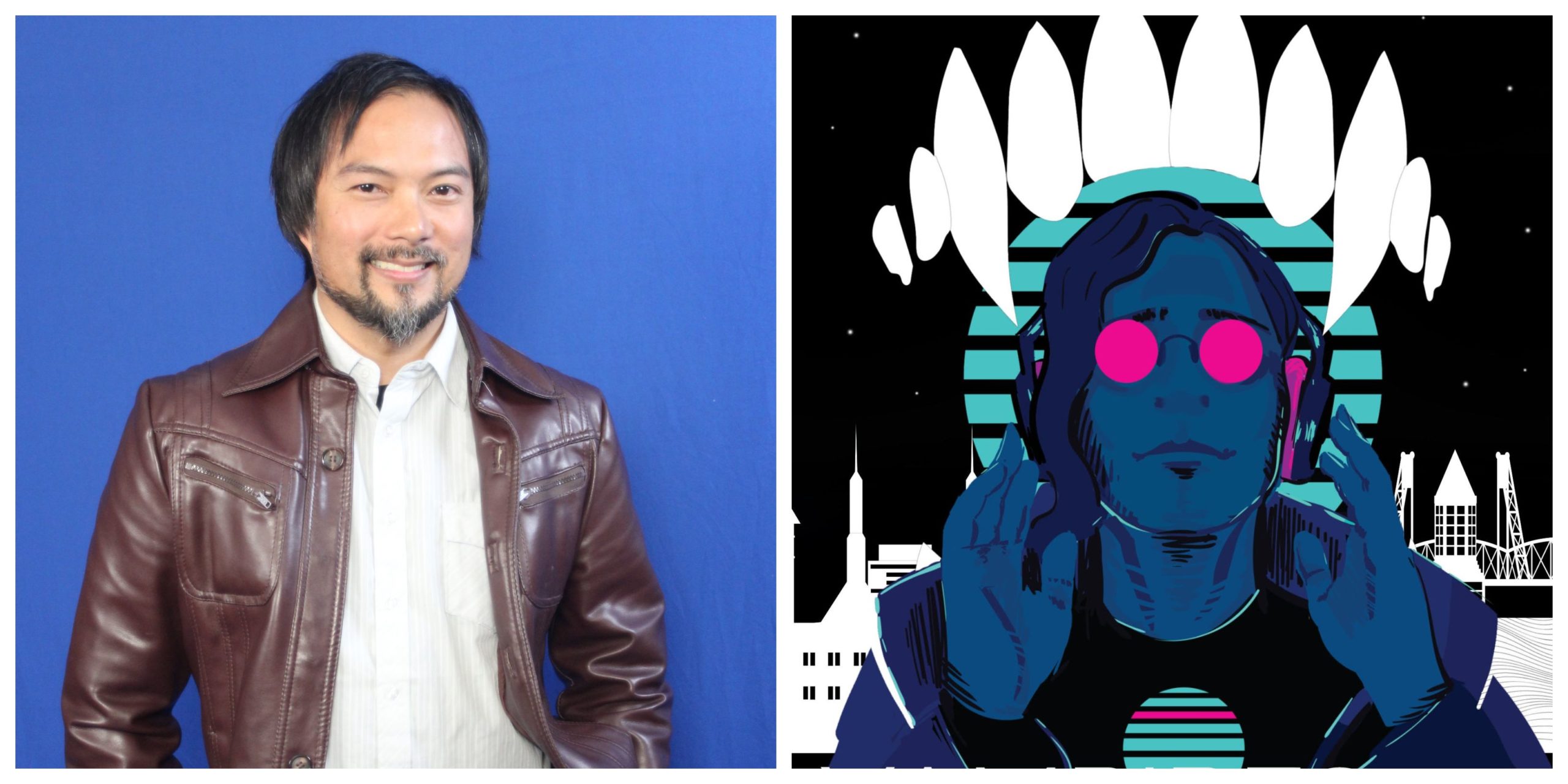Living in fear is something Filipinos are all too familiar with. These days, many are worried about what lies ahead, and if we could even go back to our “normal” lives after the COVID-19 pandemic ends. Centuries ago, our ancestors were fearful of monsters, including the shape-shifting aswang, a mythical creature that devours its victims at night while appearing like a normal human being during daylight.
Filipino-American author Jason Tanamor brings these fearful creatures into the modern-day United States with his new novel, titled Vampires of Portlandia, which is scheduled to be launched in September and published by Parliament House Press. The novel tells the story of an aswang family, led by Marcella Leones, who move to Portland, Oregon to escape the Philippine government who wish to exterminate their clan.
A former entertainment reporter, Tanamor has written for Yahoo!, CinemaBlend, and The Rock Island Argus, for which he had interviewed writer Chuck Palahniuk, host Aisha Tyler, and rock stars Billy Corgan and Chad Smith. Coconuts Manila interviewed him via email to know more about his new novel and why he was at first hesitant to embrace his Filipino identity.
Read: Incoming: New YA novel ‘Patron Saints of Nothing’ is a coming-of-age story set in Duterte’s drug war
Tell us about the genesis of this novel.
In late summer, early fall 2018, my wife and I moved to Portland, Oregon from the Midwest. Both of our jobs are downtown, so we’re always commuting in. It’s the opposite of where I came from. I worked on an army base (which if you’d ever been on a base it’s an entirely different country), so essentially, we moved from another world to a third world in Portland. There is a huge homeless problem, and it smells like human waste, but with all the nuances—various characters, threats of violence, just generally weird stuff—it’s a neat place to live.
I started writing the book almost immediately, as the surroundings contributed to setting up the world in Vampires of Portlandia nicely. The book took about nine months to write, as everything came together rather quickly.
But why write a book about aswangs in the US?
During the fall/winter, there are thousands of crows that roost in downtown Portland. That’s not an exaggeration. I work downtown, so I’m always walking around, and when it’s still dark outside, the cawing and the casted shadows freak you out. When the lights hit a crow just right, the shadow could appear on the sidewalk or building twenty times its size. If a car drives by at the right speed and time, the shadow could appear to have shifted. Along with the many homeless people sleeping on the streets, and the distant police sirens at times, the juxtaposition plays a number on you. It creates its own creepy landscape. Thus, a story was born.
Have you always had a fascination with the supernatural?
It’s not really a fascination but I do love the genre, but mixed with dark humor or comedy, which includes the shows Supernatural and Grimm, and the movies The Lost Boys and Beetlejuice. And with the ages of the main characters (they’re in their young twenties) in Vampires of Portlandia, there is a little bit of a Twilight feel as well. The new novel is a mashup of these shows and movies.
How is the environment like in the US for Filipino-American authors?
There are some Filipino-American authors that have hit mainstream such as Randy Ribay, Elaine Castillo, and Erin Entrada Kelly, but for some reason, many Filipino authors aren’t recognized in Asian-American literature. I can’t speak for others, but for myself, fully accepting my heritage had been a struggle. Perhaps this is the reason why there aren’t more recognizable Filipino-American authors?
Why were you hesitant to embrace your heritage?
I grew up primarily in white people culture. I didn’t see myself as Filipino; I speak very little Tagalog and have never been to the Philippines. Although my parents and grandmother spoke the language, most of my everyday contact was with white friends and teachers. I went to a private school in the eighties, which was mainly white, so I found myself assimilating. I’ve always looked at life through the lens of a non-Filipino. It wasn’t until recently that I’d started to accept my heritage. It was probably due to age or maturity. It could have been pride.
There’s an interesting article by Jean Kim, who writes a five-stage model of Asian American identity development, that discusses the relationship between Asian-Americans existing in predominantly white culture. It’s very enlightening.
When did your parents arrive in the US? And what was the immigrant experience for them like?
They immigrated to the Midwest in December 1974. I was born in 1975, so I don’t know too much about their experience. And with my resistance to learn about my heritage, learning about my parents’ background fell to the wayside. But I will say that there are a lot of Filipinos and Filipino-Americans in the area I grew up in. I was able to get a good mix of culture. This is probably how and why they rooted in the Midwest.
I can’t imagine moving from the Philippines to the United States in the mid-seventies. I mean, you have to know someone, right? Probably similar to when you visit a place you’ve never been and reach out to anyone you may know. “Hey, I’m in your town. Want to get together?” It’s a scary world out there.
Editor’s Note: Parts of this interview have been edited lightly for flow and clarity.





Reader Interactions